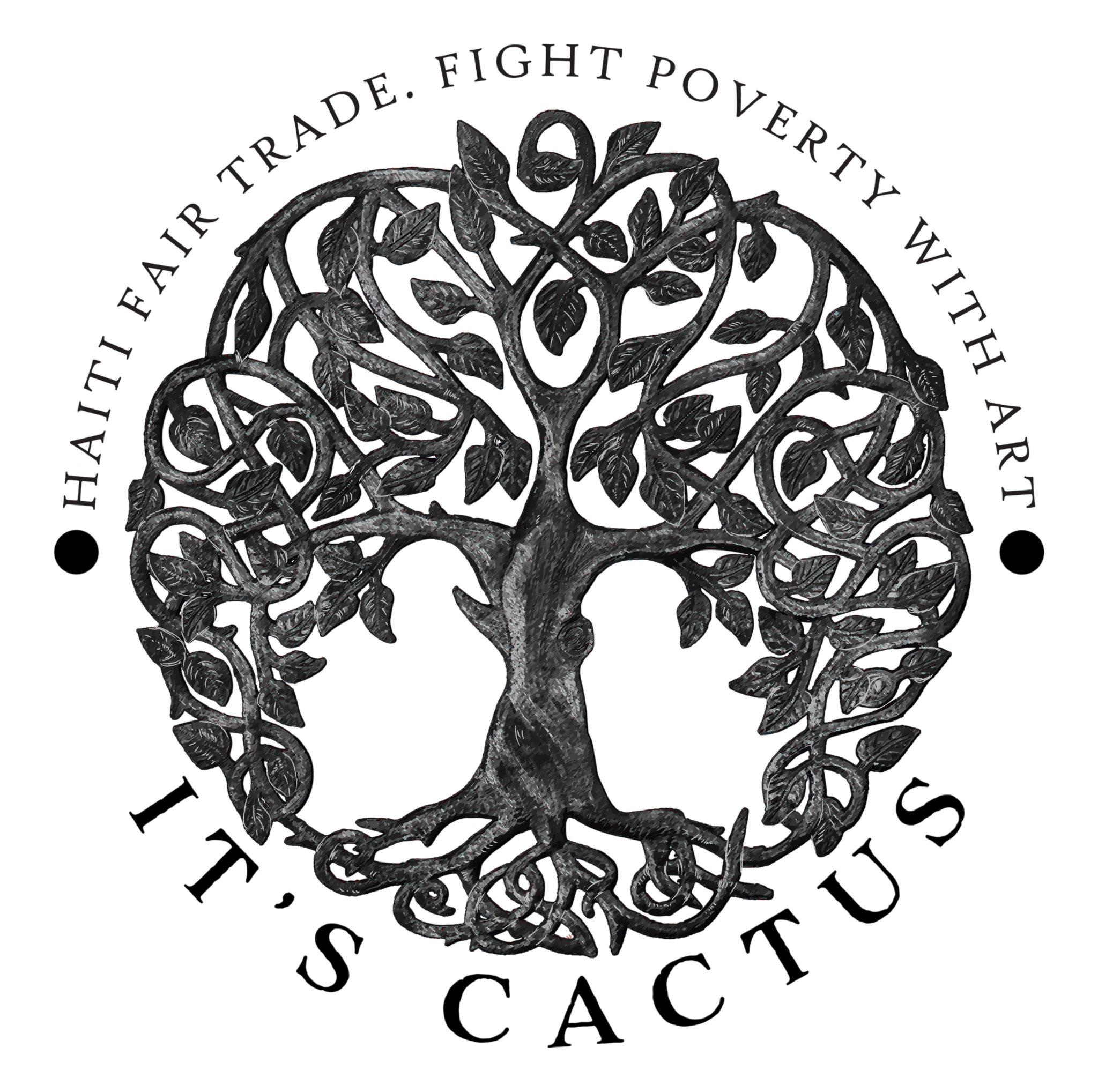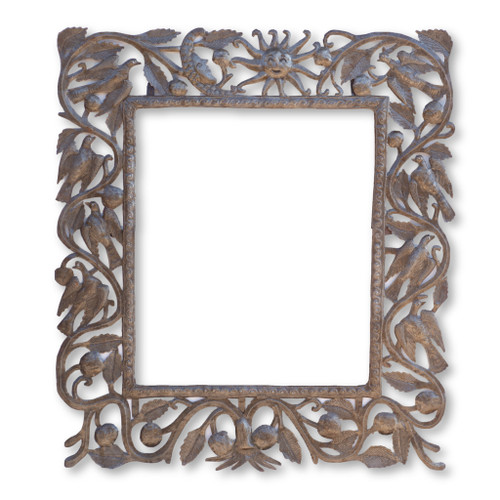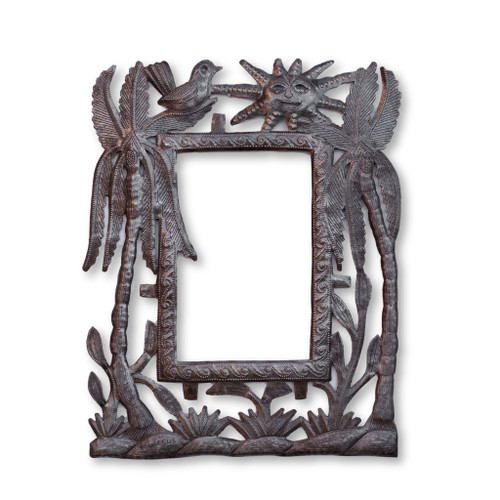Product Description
Large Wall Frame, Mermaid with Fish Circular Haitian Metal Artwork 23" x 23"
Opening 10"x10"
- Opening 10"
- A few nails and a hammer are all you'll need to hang your sculpture. Look for a place where the design is joined or notched and put the first nail there. Use a second and possibly a third nail, if the piece is large, in other joined or notched design elements within the sculpture to straighten and secure it to the wall. The nails will "disappear" with the piece. Simple as that.
- This frame is so versatile. It can be used for artwork, a favorite photo, or even a mirror. All you have to do is supply the glass. Tabs in the back are easily bent into place with pliers to hold everything in place.
- This metal sculpture is meant for display indoors or out, but if you choose to display yours outside, be aware that the protective, weather-proof coating will wear off over time. To keep your sculpture looking just like it did the day you bought it, take five minutes once a year to apply a spray-on clear enamel coating.
- Our artists proper through their own hard work, your purchases, and our fair trading practices.
- Following four generations of tradition, each piece of Haitian metal art is made entirely by hand with simple tools. Starting with a cast-off steel drum, the metal is cleaned, sanded, and pounded flat. From there, the artist chalks his design onto the metal and then begins the heavy, tedious work of cutting out the pattern with a hammer and chisel and giving the piece detail and dimension. Finally, he applies a clear-coat to the piece, which protects it and makes it perfectly suited for indoor or outdoor display.
It's Cactus Metal Art Haiti











